
Jump To
Pragmatic language refers to the social language skills that are used in our daily interactions with others. This includes what we say, how we say it, our non-verbal communication (eye contact, facial expressions, body language), and how appropriate our interactions are.
Social language is used for greeting, informing, demanding, promising, and requesting.
Social language should be changed for the given situation and listener. For example, a person should talk differently to a baby versus an adult. A person may talk differently at a party with friends versus at a job interview.
Social language has rules such as taking turns and staying on topic. It also includes the appropriate use of body language, gestures, facial expressions, and eye contact when talking to another person.
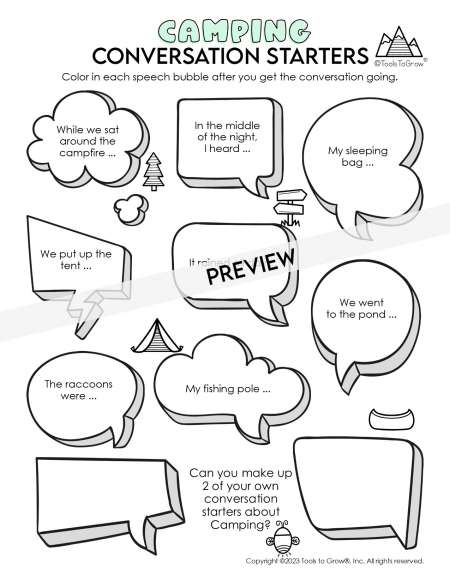
Color in each speech bubble after you get the conversation going.
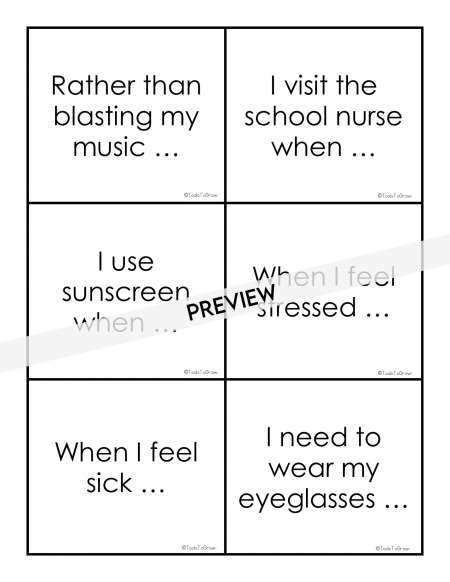
Scenario Conversation starter cards can be used to help children improve their ability to converse with others and share with others. Child is to complete the sentence by filling in the blanks. Use these cards as a starting point for children that need support with conversing with peers and/or adults.
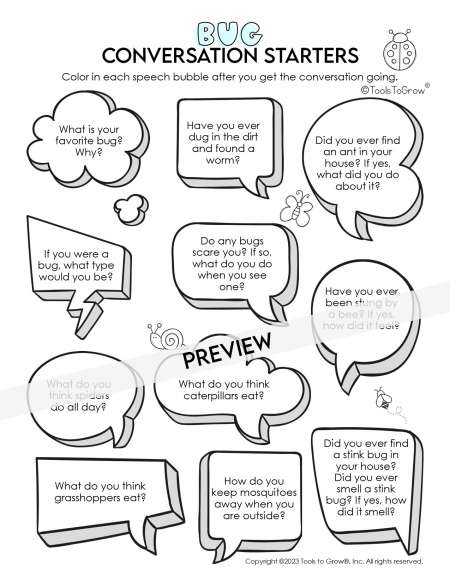
Color in each speech bubble after you get the conversation going.
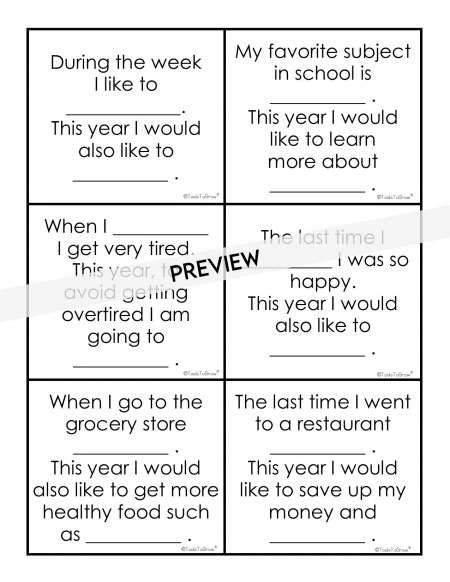
Conversation starter cards can be used to help children improve their ability to converse with others and share with others. Child is to complete the sentence by filling in the blanks. Use these cards as a starting point for children that need support with conversing with peers and/or adults.
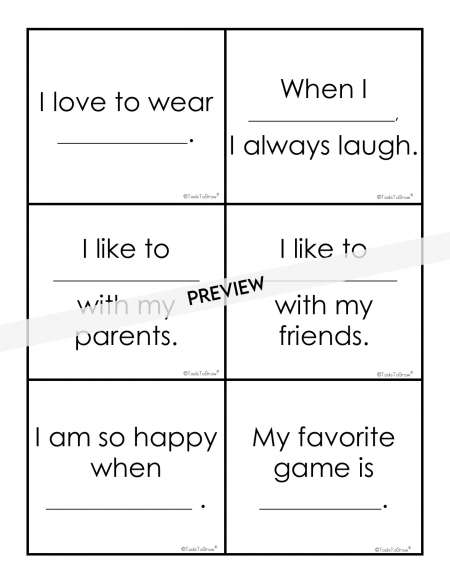
Conversation starter cards can be used to help children improve their ability to converse with others and share with others. Child is to complete the sentence by filling in the blanks. Use these cards as a starting point for children that need support with conversing with peers and/or adults.
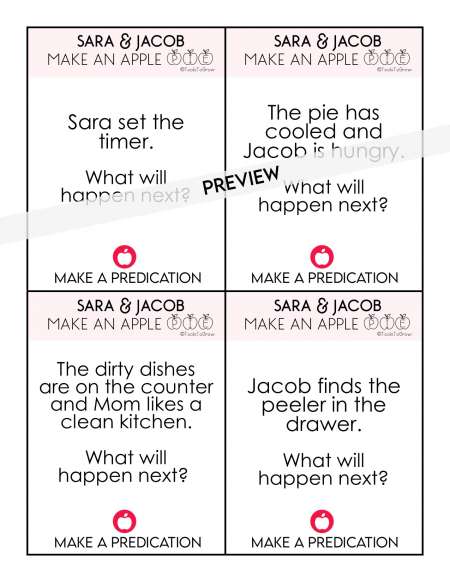
Includes 8 different cards. Cut out each card. Student will answer each question.
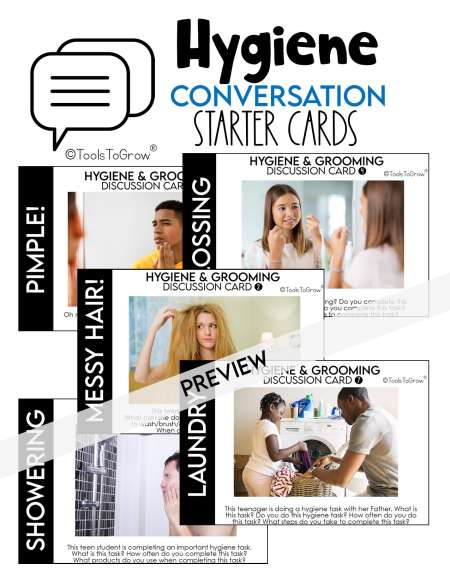
Includes 8 cards with the following topics: shaving, hair cut, pimples, messy hair, bad breath, laundry, flossing, and showering.
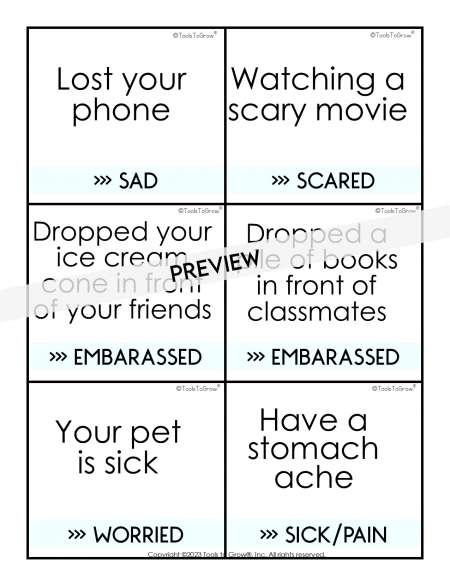
Students take turns selecting a Charade card and acting out the situation and emotion. Includes different charade cards.
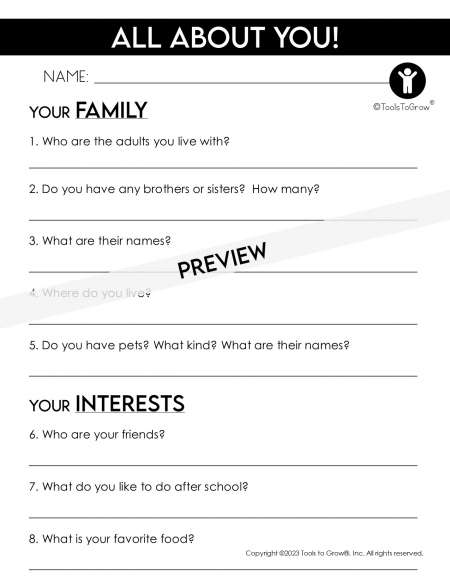
2 page questionnaire.
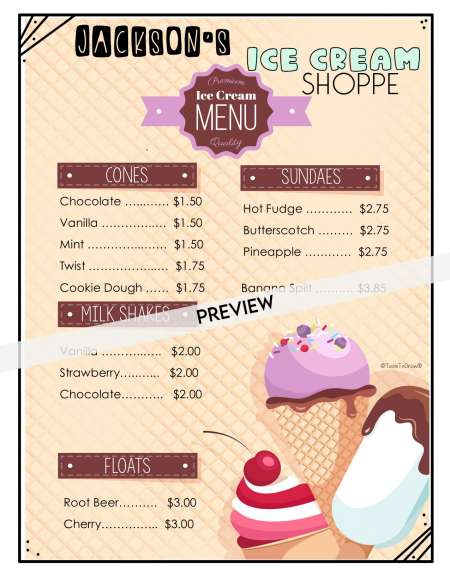
Two or more students can role play this Menu Ordering Activity. One or more students are “ordering†and another student is “taking the orderâ€.
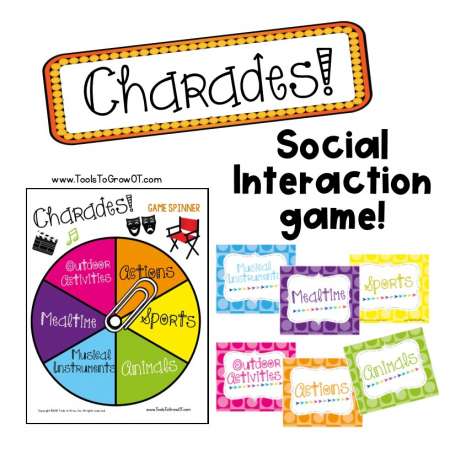
Use only movements to perform the actions required to help the others guess the phrase or word on the Charade card. The child uses his acting skills and imagination to depict what is written on the card without using any verbal communication. This is a 27 PAGE High Quality PDF! Includes detailed Instructions, Game Spinner, and Game Cards. All you need to do is print and go!
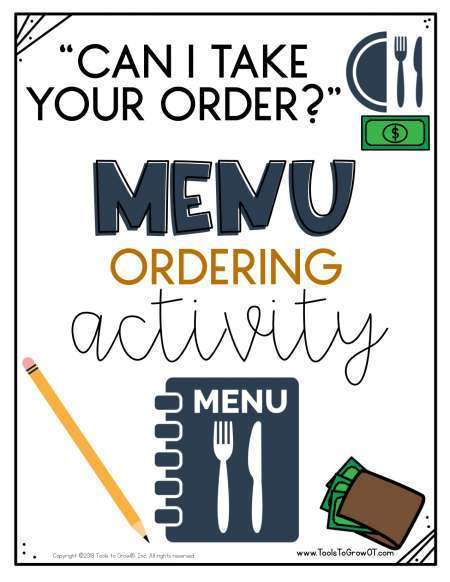
The perfect Social Skills and Speech Language Game! Includes three menus, Menu Money (Canadian and American Currency), and Guest Check form. The ordering student(s) is given the opportunity to select and read a given menu. The taking the order student is provided with a pencil and Guest Check form to record the menu item(s) selected and the cost.
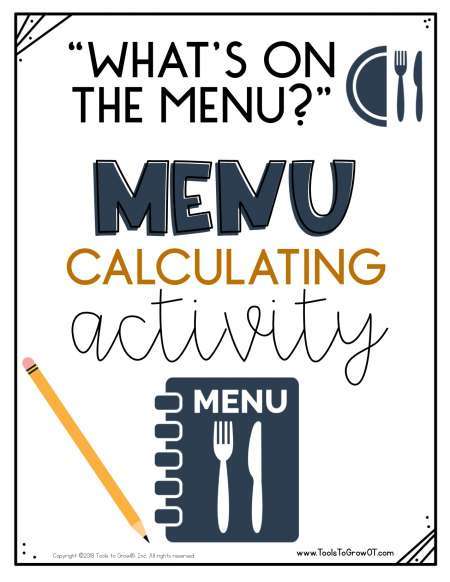
This resource includes three menus and accompanying question worksheets. The student is provided with the worksheet that corresponds to the given menu. The student reads each question and uses the menu to help answer the questions.
